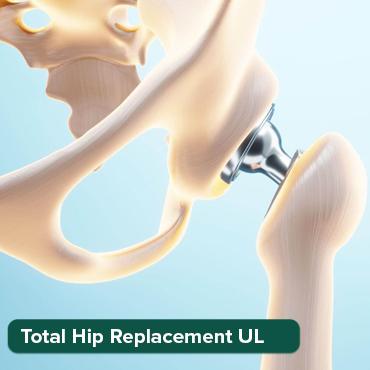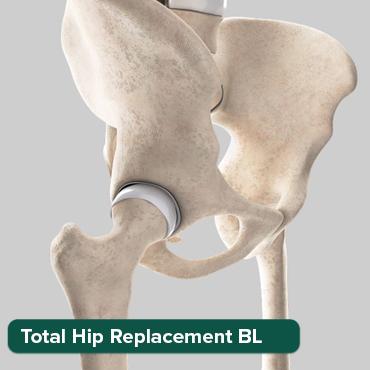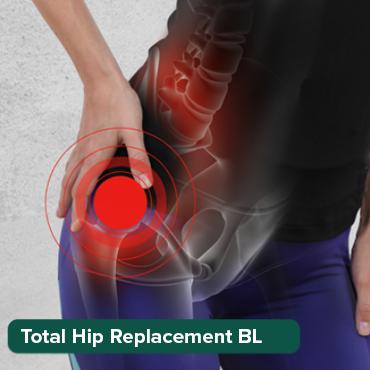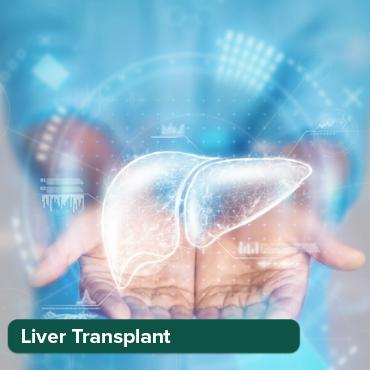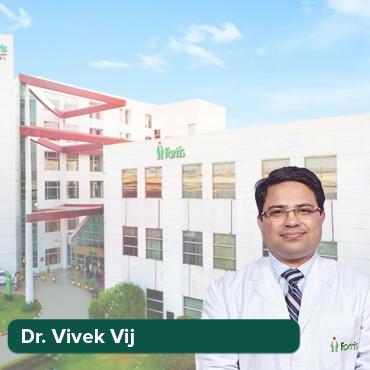
Stepwise Recovery Plan After Spine Surgery
30 Oct, 2025
 Healthtrip
Healthtrip- Where to Undergo Spine Surgery: Selecting the Right Hospital
- Why a Stepwise Recovery Plan is Crucial After Spine Surgery
- Who is Involved in Your Stepwise Recovery: Your Healthcare Team
- How to Implement a Stepwise Recovery Plan: Key Stages & Exercises
- Examples of Successful Stepwise Recovery Journeys
- Conclusion: Embracing Your Stepwise Recovery for Optimal Spine Health
Immediate Post-Operative Care
After spine surgery, the initial days are crucial for setting the stage for a successful recovery. Pain management is a top priority; your healthcare team at facilities like Memorial Sisli Hospital in Istanbul will work to keep you comfortable with medication, usually a combination of pain relievers, muscle relaxants, and anti-inflammatory drugs. Early mobilization is also key, though it may seem daunting. Gentle movements, such as sitting up in bed or taking short walks with assistance from nurses or physical therapists, help to prevent complications like blood clots and pneumonia. Your medical team at hospitals such as Saudi German Hospital Cairo in Egypt will also monitor your vital signs, wound healing, and neurological function to ensure everything is progressing as expected. Don't hesitate to voice any concerns or discomfort you're experiencing; open communication with your medical team is essential for personalized care. Remember, this is just the first step, and gradual progress is the goal. It's important to follow all instructions carefully and allow your body the time it needs to heal, you've got this!Most popular procedures in India
Phase 1: Early Rehabilitation (Weeks 1-6)
This phase focuses on protecting the healing spine while gradually increasing activity. Physical therapy plays a vital role, with exercises designed to improve flexibility, strength, and posture. Initially, these exercises will be gentle and may include simple stretches and range-of-motion movements. You might be working with therapists who have experience with hospitals such as Max Healthcare Saket who may guide you through exercises to prevent stiffness and promote blood flow without putting excess strain on the back. As pain decreases, exercises will become more challenging, focusing on core strengthening and postural correction. During this period, it's essential to avoid bending, twisting, and lifting heavy objects. You might need assistance with household chores and daily activities. Assistive devices, such as a back brace or grabber, can make tasks easier and prevent re-injury. Remember, patience is key. Listen to your body and avoid pushing yourself too hard, even if you're eager to return to your normal routine. Healthtrip can help you find reputable rehabilitation centers offering specialized programs and support during this critical phase.Phase 2: Intermediate Rehabilitation (Weeks 6-12)
After the initial six weeks, you'll gradually transition to more challenging exercises. This phase aims to improve strength, endurance, and functional abilities. Physical therapy will continue to be a central part of your recovery plan, with exercises progressing to include more resistance and weight-bearing activities. Your therapist may also introduce exercises to improve balance and coordination. This could be a good time to check in with doctors at hospitals such as Fortis Escorts Heart Institute on your progress. During this phase, you'll be encouraged to gradually increase your activity level, returning to light activities like walking, swimming, or cycling. However, it's still important to avoid strenuous activities that could put excessive strain on the spine. This is also a good time to focus on ergonomic adjustments to your work and home environment to prevent future back problems. Consider investing in an ergonomic chair, adjusting your workstation to promote good posture, and learning proper lifting techniques. Healthtrip offers resources and consultations to help you create a safe and supportive environment for continued healing.Wellness Treatments
Give yourself the time to relax
Lowest Prices Guaranteed!

Lowest Prices Guaranteed!
Phase 3: Advanced Rehabilitation (Weeks 12+)
This phase focuses on achieving long-term functional goals and returning to your desired activity level. Physical therapy will continue to play a role, with exercises designed to maintain strength, flexibility, and endurance. Your therapist may also introduce sport-specific exercises or activities that help you return to hobbies and recreational pursuits. Depending on the initial problem if you had your surgery at a world class facility like Quironsalud Hospital Murcia, you are likely now in a good space. During this phase, it's essential to maintain a healthy lifestyle, including a balanced diet, regular exercise, and stress management techniques. Continuing practices that were introduced at facilities like Yanhee International Hospital, will help maintain quality of life in the long run. It's also important to continue to avoid activities that could potentially re-injure the spine. Regular follow-up appointments with your surgeon or healthcare provider are necessary to monitor your progress and address any concerns. Remember, spine surgery is a journey, not a destination. Continued commitment to your rehabilitation plan and a healthy lifestyle will help you achieve long-term success and enjoy a pain-free, active life.Managing Pain and Discomfort
Pain management is an ongoing process during the recovery period. While medication plays a crucial role, there are also several non-pharmacological approaches that can help alleviate discomfort. Ice and heat therapy can provide temporary relief. Ice can reduce inflammation and numb the area, while heat can relax muscles and improve blood flow. Gentle stretching and massage can also help to ease muscle tension and improve flexibility. Relaxation techniques, such as deep breathing exercises, meditation, and yoga, can help to reduce stress and promote overall well-being. It is good to remember the lessons taught at facilities like Taoufik Clinic, Tunisia. Lifestyle modifications, such as maintaining a healthy weight, avoiding smoking, and getting enough sleep, can also contribute to pain management. It's important to work closely with your healthcare provider to develop a comprehensive pain management plan that addresses your specific needs and preferences. Don't hesitate to voice any concerns or difficulties you're experiencing. Effective pain management is essential for a successful recovery. Healthtrip can connect you with pain management specialists and resources to support you throughout your journey.Potential Complications and How to Address Them
While spine surgery is generally safe, potential complications can occur. These may include infection, blood clots, nerve damage, wound healing problems, and persistent pain. It's important to be aware of these risks and to promptly report any concerning symptoms to your healthcare provider and if you have been treated at NMC Specialty Hospital, Al Nahda, Dubai you are likely aware of these already. Signs of infection may include fever, redness, swelling, or drainage from the surgical site. Symptoms of blood clots may include pain, swelling, or warmth in the leg. Nerve damage can cause numbness, tingling, or weakness in the extremities. Persistent pain can interfere with daily activities and require further treatment. If you experience any of these complications, seek immediate medical attention. Your healthcare provider will evaluate your condition and recommend appropriate treatment. This may include antibiotics for infection, blood thinners for blood clots, or further surgery to address nerve damage. It's also important to follow all instructions carefully to minimize the risk of complications. Proper wound care, early mobilization, and avoiding smoking can all contribute to a smoother recovery. Healthtrip provides access to expert medical advice and support to help you navigate any potential complications and ensure a successful outcome.Lifestyle Adjustments for Long-Term Spine Health
Maintaining a healthy lifestyle is crucial for protecting your spine and preventing future problems. Regular exercise is essential for strengthening back muscles, improving flexibility, and maintaining a healthy weight. Low-impact activities like walking, swimming, and cycling are generally safe and effective. Proper posture is also important. Be mindful of your posture when sitting, standing, and lifting. Use good body mechanics when performing daily activities. Ergonomic adjustments to your work and home environment can also help to prevent back strain. Maintain a healthy weight to reduce stress on your spine. A balanced diet rich in fruits, vegetables, and whole grains can provide the nutrients your body needs for healing and overall health. Avoid smoking, as it can impair blood flow to the spine and delay healing. Stress management techniques, such as yoga, meditation, and deep breathing exercises, can help to reduce muscle tension and promote relaxation. Continuing care at a facility such as London Medical, would also be beneficial. By making these lifestyle adjustments, you can protect your spine and enjoy a pain-free, active life for years to come. Healthtrip offers resources and support to help you adopt healthy habits and maintain long-term spine health. < p>Where to Undergo Spine Surgery: Selecting the Right Hospital
Choosing the right hospital for spine surgery is arguably one of the most crucial decisions you'll make on your journey to recovery. It's not just about finding a place with state-of-the-art equipment, but also about entrusting your well-being to a team of highly skilled and compassionate professionals. When you're dealing with something as delicate and vital as your spine, you want to be absolutely certain that you're in the best possible hands. Think of it like choosing a pilot for a long-haul flight – you want someone with a stellar safety record, years of experience, and a calm demeanor, right? The same principle applies here. We at Healthtrip understand this deeply and are committed to helping you navigate this critical decision. We connect you with hospitals that not only boast cutting-edge technology but also have a proven track record of successful spine surgeries and comprehensive post-operative care.
Consider factors like the hospital's accreditation, the qualifications and experience of the surgeons and medical staff, and the availability of advanced diagnostic and surgical technologies. For instance, hospitals like Fortis Memorial Research Institute, Gurgaon and Max Healthcare Saket in India are renowned for their advanced orthopedic departments and skilled surgeons. Similarly, Vejthani Hospital in Bangkok and Memorial Sisli Hospital in Istanbul offer world-class facilities and expertise in spine surgery. Saudi German Hospital Cairo, Egypt, is another excellent choice, providing comprehensive medical care and modern facilities. These hospitals understand the importance of a patient-centric approach, which means they prioritize your comfort, safety, and overall well-being throughout the entire process. Healthtrip takes the guesswork out of finding the right hospital by providing you with detailed information, patient reviews, and expert insights to help you make an informed choice.
Beyond the technical aspects, it's also essential to consider the hospital's approach to patient care. Does the hospital offer comprehensive pre-operative counseling and post-operative rehabilitation programs? Do they have a dedicated team of nurses, physical therapists, and pain management specialists to support you throughout your recovery? A hospital that emphasizes a holistic approach to care, addressing both your physical and emotional needs, can significantly improve your overall experience and outcome. After all, surgery is just one piece of the puzzle; the recovery process is equally important. Finally, consider the location and accessibility of the hospital. If you're traveling from abroad for surgery, you'll want to choose a hospital that's easily accessible from the airport and offers comfortable accommodations for you and your family. Healthtrip can assist you with travel arrangements, visa assistance, and accommodation bookings, making your journey as smooth and stress-free as possible.
Why a Stepwise Recovery Plan is Crucial After Spine Surgery
So, you've decided on the hospital and the surgery is done – congratulations! But hold on, the journey isn't over yet. In fact, the next phase, your recovery, is just as vital for achieving the best possible outcome. Think of it as baking a cake; you've got the ingredients and the oven, but the key to a perfect result lies in the precise timing and careful monitoring. A stepwise recovery plan after spine surgery is like that recipe, meticulously designed to guide you through each stage of healing, ensuring you regain strength, mobility, and overall well-being safely and effectively. It's not just about lying in bed and waiting to magically heal; it's about actively participating in your recovery process, guided by a team of experts who understand the intricacies of spinal healing.
A well-structured stepwise recovery plan addresses several critical aspects of post-operative care. First and foremost, it helps manage pain effectively. Spine surgery can be painful, and a stepwise plan incorporates various pain management techniques, including medication, physical therapy, and alternative therapies, to keep you comfortable and allow you to focus on your rehabilitation. Secondly, it focuses on restoring your mobility and strength gradually. Your body has been through a major operation, and it needs time to heal. A stepwise plan introduces exercises and activities in a progressive manner, starting with gentle movements and gradually increasing in intensity as your body recovers. This prevents overexertion and reduces the risk of complications. Thirdly, it emphasizes proper posture and body mechanics. Learning how to move and position your body correctly is crucial for preventing future back problems and maintaining long-term spinal health. Physical therapists will teach you techniques for lifting, bending, and sitting that minimize stress on your spine.
Moreover, a stepwise recovery plan helps you regain independence and return to your normal activities as quickly and safely as possible. It sets realistic goals and milestones, providing you with a sense of progress and motivation. It also addresses any psychological or emotional challenges you may face during recovery. Spine surgery can be a stressful experience, and it's not uncommon to feel anxious, depressed, or frustrated. A comprehensive recovery plan includes access to counseling and support groups to help you cope with these emotions and stay positive. Overall, a stepwise recovery plan is not just about healing your spine; it's about empowering you to take control of your health and well-being, ensuring you can live a full and active life after surgery. Healthtrip recognizes the importance of this phase and connects you with hospitals and rehabilitation centers that offer comprehensive stepwise recovery programs tailored to your specific needs.
Who is Involved in Your Stepwise Recovery: Your Healthcare Team
Think of your stepwise recovery plan as a collaborative project, one where you're the CEO, but you have a team of highly skilled specialists working alongside you. This isn't a solo mission; it's a coordinated effort involving various healthcare professionals, each with their unique expertise and role to play in your healing journey. Recognizing and appreciating the contributions of each team member is crucial for a successful recovery. After all, you wouldn't expect a football team to win a game without a coach, quarterback, and a solid defense, would you? Similarly, your healthcare team provides the guidance, support, and expertise you need to navigate the complexities of post-operative recovery.
The core of your healthcare team typically includes your surgeon, who oversaw the surgical procedure and will continue to monitor your progress. They are your go-to person for any questions or concerns related to the surgery itself. Next, there's your physical therapist, the movement guru who will guide you through exercises and activities to restore your strength, flexibility, and mobility. They will assess your functional limitations and design a personalized rehabilitation program tailored to your specific needs. Occupational therapists may also be involved, helping you regain the skills needed to perform daily tasks, such as dressing, bathing, and cooking. They can provide adaptive equipment and strategies to make these tasks easier and safer.
Pain management specialists are crucial for managing post-operative pain effectively. They may use a combination of medication, injections, and other therapies to keep you comfortable and allow you to participate fully in your rehabilitation program. Nurses provide essential care and support, monitoring your vital signs, managing your medications, and addressing any immediate concerns. They are your advocates, ensuring you receive the best possible care and attention. And let's not forget the importance of your primary care physician, who will coordinate your overall care and ensure you're managing any other health conditions you may have. Beyond these core members, your team may also include psychologists or counselors, who can provide emotional support and help you cope with the psychological challenges of recovery. Registered dietitians can help you optimize your nutrition to support healing and recovery. And finally, your family and friends are an integral part of your team, providing emotional support, encouragement, and practical assistance. Healthtrip understands the importance of a comprehensive healthcare team and can connect you with hospitals and clinics that emphasize a collaborative, patient-centered approach to care.
Also Read:
How to Implement a Stepwise Recovery Plan: Key Stages & Exercises
Embarking on a stepwise recovery plan after spine surgery is like climbing a carefully constructed staircase – each step building upon the previous one to lead you towards renewed strength and mobility. It's not a race, but a deliberate journey charted to ensure your spine heals properly and you regain optimal function. The initial phase, immediately following surgery, is primarily focused on pain management and protecting the surgical site. Imagine your body as a freshly planted seedling; it needs gentle nurturing and protection to take root. During this stage, activities are limited, and you'll likely be under the close supervision of nurses and therapists at facilities like Fortis Hospital, Noida or Max Healthcare Saket, where pain will be managed through medication and gentle positioning. As you progress, the focus shifts to gradually increasing mobility, perhaps with short walks around your room or the hospital corridor. The key is to listen to your body and avoid pushing yourself too hard, as this can hinder healing. Remember, patience is not just a virtue, it's a vital component of a successful recovery.
Early Stages: Weeks 1-4 Post-Surgery
The first four weeks after spine surgery are crucial for allowing the surgical site to heal and for your body to begin adapting to the changes. Picture this phase as the "rest and recharge" mode for your spine. During this period, your activity level will be significantly restricted. You'll mainly be focusing on managing pain and inflammation, which might involve taking prescribed medications and using ice packs. Expect to spend a lot of time resting, preferably in a comfortable position that doesn't strain your back. Light activities, like gentle ankle pumps and wrist rotations, can help improve circulation and prevent stiffness. As tempting as it might be to jump back into your routine, remember that this is a marathon, not a sprint. Hospitals like Vejthani Hospital in Bangkok or Memorial Sisli Hospital in Istanbul often provide detailed instructions on proper posture and body mechanics to avoid re-injury. Gradually, under the guidance of your physical therapist, you might start incorporating short walks around your home, increasing the distance and duration as tolerated. Listen attentively to your body's signals and don't hesitate to rest if you feel any pain or discomfort. This phase is about paving the way for a stronger and more resilient you, one gentle step at a time.
Intermediate Stages: Weeks 5-8 Post-Surgery
As you enter weeks 5-8 post-surgery, you're likely to feel a surge of optimism as your pain begins to subside and your mobility gradually increases. This is the "building strength" phase, where you start actively participating in exercises designed to strengthen your core and back muscles. Think of your core as the scaffolding that supports your spine; strengthening it is essential for long-term stability and pain relief. Your physical therapist will guide you through a series of exercises, which may include pelvic tilts, bridges, and gentle abdominal contractions. These exercises should be performed with proper form and technique to avoid straining your spine. Remember, quality over quantity is the mantra here. Facilities like Saudi German Hospital Cairo, Egypt, and Fortis Memorial Research Institute, Gurgaon, often have specialized rehabilitation programs to help you progress safely and effectively. During this phase, you might also start incorporating low-impact activities like walking, swimming, or cycling into your routine. These activities can help improve your cardiovascular fitness and overall well-being. It's important to avoid any activities that involve twisting, bending, or lifting heavy objects, as these can put excessive stress on your healing spine. Celebrate your progress, but don't get ahead of yourself – consistency and patience are your best allies during this stage.
Advanced Stages: Weeks 9 and Beyond
Reaching week 9 and beyond signifies that you're entering the "return to life" phase of your spine surgery recovery. By now, you should be experiencing significant improvements in your pain levels, mobility, and overall function. However, remember that recovery is an ongoing process, and maintaining a healthy lifestyle is crucial for preventing future problems. This phase focuses on gradually returning to your normal activities, including work, hobbies, and social engagements. Your physical therapist will work with you to develop a personalized exercise program that addresses your specific needs and goals. This program may include strengthening exercises, stretching exercises, and aerobic exercises. Consider hospitals like Bangkok Hospital or Quironsalud Hospital Murcia that offer comprehensive long-term rehabilitation support. It's also important to pay attention to your posture and body mechanics throughout the day to avoid straining your spine. Remember to lift objects properly, sit with good support, and take frequent breaks to stretch and move around. As you return to your normal activities, listen to your body and avoid pushing yourself too hard. Celebrate your achievements and be proud of the progress you've made. With continued effort and dedication, you can enjoy a healthy and active life after spine surgery.
Also Read:
Examples of Successful Stepwise Recovery Journeys
Hearing real-life stories of individuals who have successfully navigated the stepwise recovery process after spine surgery is incredibly motivating and provides valuable insights into what to expect during your own journey. These narratives often highlight the challenges encountered, the strategies employed, and the triumphs achieved, offering a roadmap for optimal recovery. Consider the story of Sarah, a 45-year-old teacher who underwent spinal fusion surgery to correct a chronic back problem. In the initial weeks after surgery, Sarah diligently followed her doctor's instructions, prioritizing rest and pain management. She gradually increased her activity level, starting with short walks around her house and eventually progressing to longer walks in her neighborhood. With the help of her physical therapist, Sarah learned proper lifting techniques and incorporated core-strengthening exercises into her daily routine. Like facilities such as Cleveland Clinic London, which emphasizes patient education, Sarah took the time to understand her condition and recovery process. She also sought support from her family, friends, and a local support group, which helped her stay motivated and positive. After several months of hard work and dedication, Sarah was able to return to teaching and enjoys an active lifestyle without chronic back pain. Her story, and others like it, illustrate the power of a stepwise recovery plan, combined with patient education and support.
Another inspiring example is that of David, a 60-year-old retiree who underwent laminectomy surgery to relieve pressure on his spinal nerves. David, like many others, initially felt overwhelmed by the prospect of recovery, but he embraced the stepwise approach wholeheartedly. He started with gentle range-of-motion exercises in bed, gradually progressing to more challenging exercises as his pain subsided. David found that water therapy was particularly helpful in reducing his pain and improving his mobility. He also focused on maintaining a healthy weight and eating a nutritious diet to support his healing process. David, supported by the comprehensive care available at hospitals like Singapore General Hospital, also found that connecting with other patients who had undergone similar surgeries was invaluable. Sharing experiences and offering encouragement created a sense of community and helped him stay on track. After several months of consistent effort, David was able to resume his favorite hobbies, including gardening and golfing. These success stories demonstrate that with the right approach and a positive attitude, it is possible to achieve a full and fulfilling recovery after spine surgery.
Also Read:
Conclusion: Embracing Your Stepwise Recovery for Optimal Spine Health
Embarking on a journey of stepwise recovery after spine surgery is akin to tending a garden – patience, diligence, and a nurturing approach are essential for cultivating optimal results. It's a process that requires you to be an active participant, working in close collaboration with your healthcare team to achieve your goals. The key takeaway is that recovery isn't a passive event but rather a dynamic and progressive process. By embracing the stepwise approach, you can gradually rebuild your strength, mobility, and overall function, paving the way for a healthier and more fulfilling life. Remember, the initial stages focus on managing pain and protecting the surgical site, allowing your body to heal and adapt. As you progress, you'll gradually increase your activity level, incorporating exercises designed to strengthen your core and back muscles. The final stages involve returning to your normal activities, with a continued emphasis on maintaining a healthy lifestyle and preventing future problems. Facilities such as LIV Hospital, Istanbul or Yanhee International Hospital in Thailand can be valuable resources for comprehensive post-operative care. It's important to listen to your body throughout the process, adjusting the intensity and duration of your exercises as needed. Don't be afraid to seek support from your healthcare team, family, and friends, as they can provide valuable encouragement and guidance.
Ultimately, a successful stepwise recovery after spine surgery is about more than just physical healing – it's about reclaiming your life and embracing a future filled with possibilities. It's about celebrating your achievements, big and small, and recognizing that you have the power to shape your own recovery journey. By following a structured plan, staying positive, and maintaining open communication with your healthcare team, you can achieve optimal spine health and enjoy a vibrant and active life. Consider the wealth of resources available through Healthtrip to connect with leading hospitals and skilled medical professionals. Whether you're exploring options at Fortis Shalimar Bagh or seeking advanced care at Jimenez Diaz Foundation University Hospital, remember that your health journey is a priority. Embrace the journey, celebrate your progress, and remember that you are not alone. With the right approach and a unwavering commitment to your well-being, you can navigate the stepwise recovery process with confidence and emerge stronger than ever before.
Related Blogs

Frequently Asked Questions About Neuro Surgery
Detailed insights into neuro surgery – doctors, hospitals, technology, recovery,

Advanced Robotic Technology Used in Neuro Surgery
Detailed insights into neuro surgery – doctors, hospitals, technology, recovery,

How Healthtrip Supports Foreign Patients for Neuro Surgery in India
Detailed insights into neuro surgery – doctors, hospitals, technology, recovery,

Top Medical Packages for Neuro Surgery Offered by Healthtrip
Detailed insights into neuro surgery – doctors, hospitals, technology, recovery,

Stepwise Recovery Plan After Neuro Surgery
Detailed insights into neuro surgery – doctors, hospitals, technology, recovery,

Choosing the Right Surgeon for Neuro Surgery
Detailed insights into neuro surgery – doctors, hospitals, technology, recovery,
